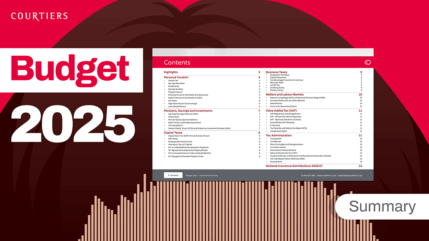“A generous basic state pension is the least a civilized society should offer those
who have worked hard and saved through their whole lives”
(George Osborne)
The UK is renowned for having one of the most complex and lowest paying state pensions in the developed world. Next April sees the introduction of a new single tier state pension scheme which is designed to simplify how individuals receive their pension. Billed as the ‘Flat Rate Pension’ it will increase the basic state pension for thousands of individuals. The additional state pension, called ‘State Second Pension’ (S2P) will close and the ‘State Earnings Related Pension Scheme’ (SERPS) will end. Currently, the maximum state pension amount stands at £115.95 per week but under the new rules, it is expected to be no less than £151.25. The exact figure will be announced in George Osborne’s autumn budget on 25 November 2015.
The maximum amount you can receive under the new Flat Rate scheme is dependent on the number of years an individual has contributed in National Insurance (NI). At present the maximum number of NI contributions stands at 30 years. The new Flat Rate scheme is designed to be simple; anyone who has paid in 35 years of NI contributions will receive £151.25 per week, which is an extra £35.30 on the current maximum.
So far, so good.
However the change to the new state pension brings many complications, especially for those approaching state pension age. Workers who have previously been ‘contracted out’ of receiving S2P benefits or SERPS in exchange for paying a reduced rate of National Insurance (NI) are likely to be affected. Under the new system, individuals will no longer be able to accrue additional state pension so their benefits will be capped after 35 years. This means that workers who have accrued the qualifying 35 years may still continue to pay NI contributions for no extra pension benefit.
It’s not all doom and gloom though. It seems that the main winners from the new scheme will be the long term selfemployed and those who have been out of work for periods of time, as they may benefit by almost £2,000 per year due to the increase in the basic state pension. The Department for Work and Pensions stated that reports of people losing out are misleading and that many women, carers, lower earners and the self-employed will gain from the changes. If you are unsure as to how many years’ worth of NI contributions you have made, this can be obtained from the Department of Work and Pensions, or please do contact your Courtiers adviser.
To boost state pension income, some individuals can contribute to a new interim voluntary NI scheme known as Class 3A running for 18 months from October 2015. This ‘State Pension top-up’ allows individuals to receive a maximum of £25 per week by paying additional Class 3A NI contributions. It is designed for existing pensioners and those reaching state pension age before 6 April 2016. The amount you have to contribute is dependent on age so for example, if a person aged 65 wants to increase their state pension by £1 per week they will need to contribute £890. If they wish to receive the full £25 per week it will cost them £22,250. For a 75 year old, this contribution will reduce to £16,850. An additional benefit is that the income will increase in line with the consumer prices index and when an individual passes away, their spouse will get 50% until they pass away. This option is cheaper than taking out an annuity for a healthy 65 year old, which would provide a return of roughly 3% based on current rates on the open market, whereas the Class 3A scheme has a return of around 6%.
However if we break this down, it may not appear to be such a good deal. Let’s go back to that figure of £22,250. If left as capital in a cash ISA for example, no tax is due when you take any cash out. By investing into the state pension, the subsequent income becomes subject to income tax. For a 65 year old non taxpayer who wants to get the full £25 per week, it would take until they are 82 for the state to return the £22,250. For a 20% taxpayer they would need to live to 86, and for a 45% taxpayer they would need to live to 95 before their capital is returned! This is assuming inflation stays at current levels.
How can you benefit from the changes?
Another way of increasing your pension is to delay taking it. For those reaching state pension age after 6 April 2016 they will receive a 5.8% increase for every full year they defer taking the pension. This increase has been reduced from 10.4% under the present scheme, but for some, it may be more beneficial than making voluntary contributions.
For an individual receiving a pension of £132 per week, under the current rules they would receive an extra £713 a year if they delayed taking their pension, however, under the new rules this would drop to £398 per year.
These new rules rather go against the government’s tagline of ‘simplifying’ the state pension. The tax treatment does depend on individual circumstances and is subject to change. Your Courtiers adviser is available to answer any queries you may have and review with you how your state pension options could be affected.













